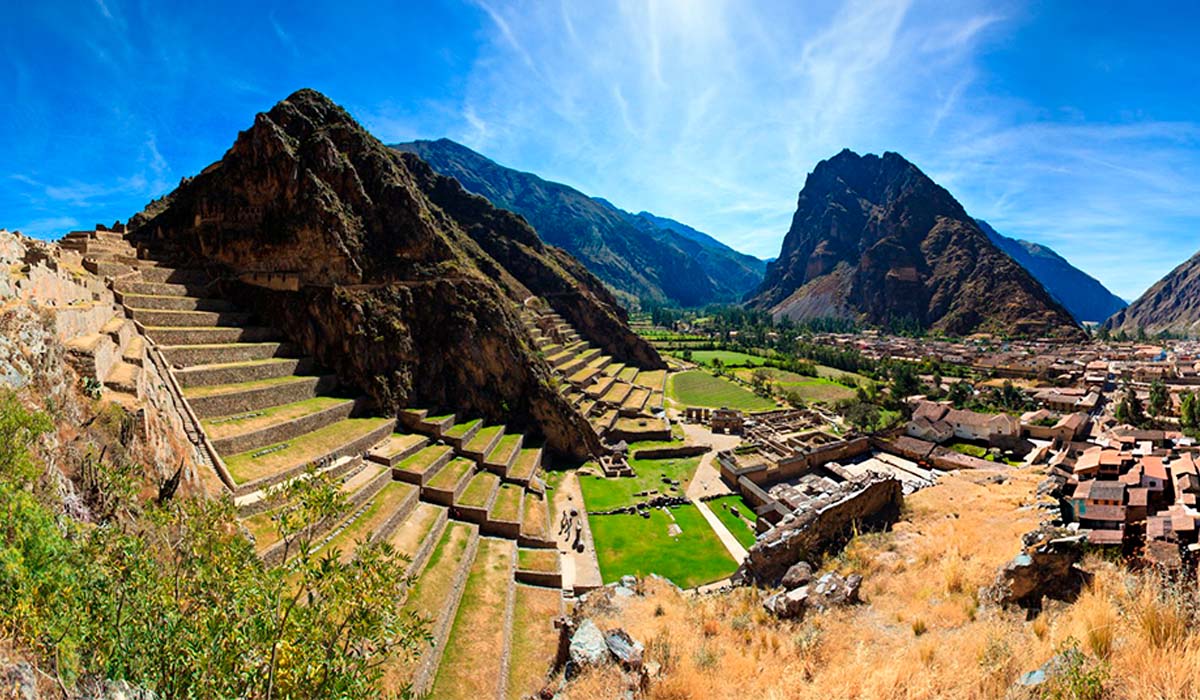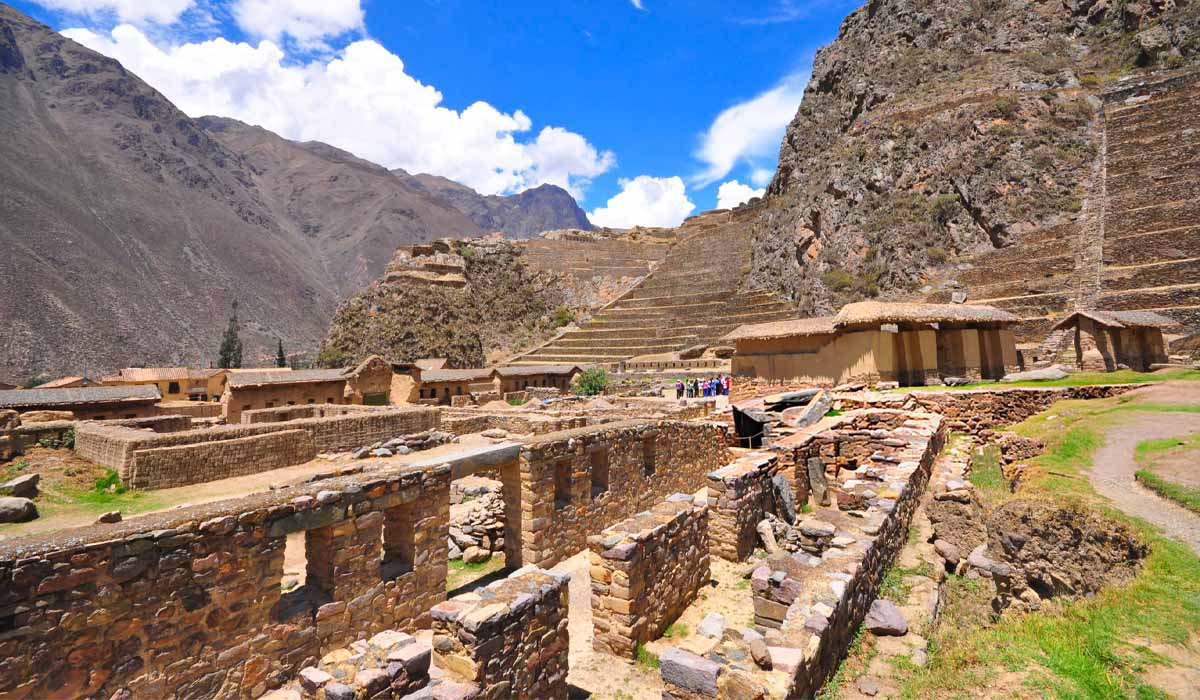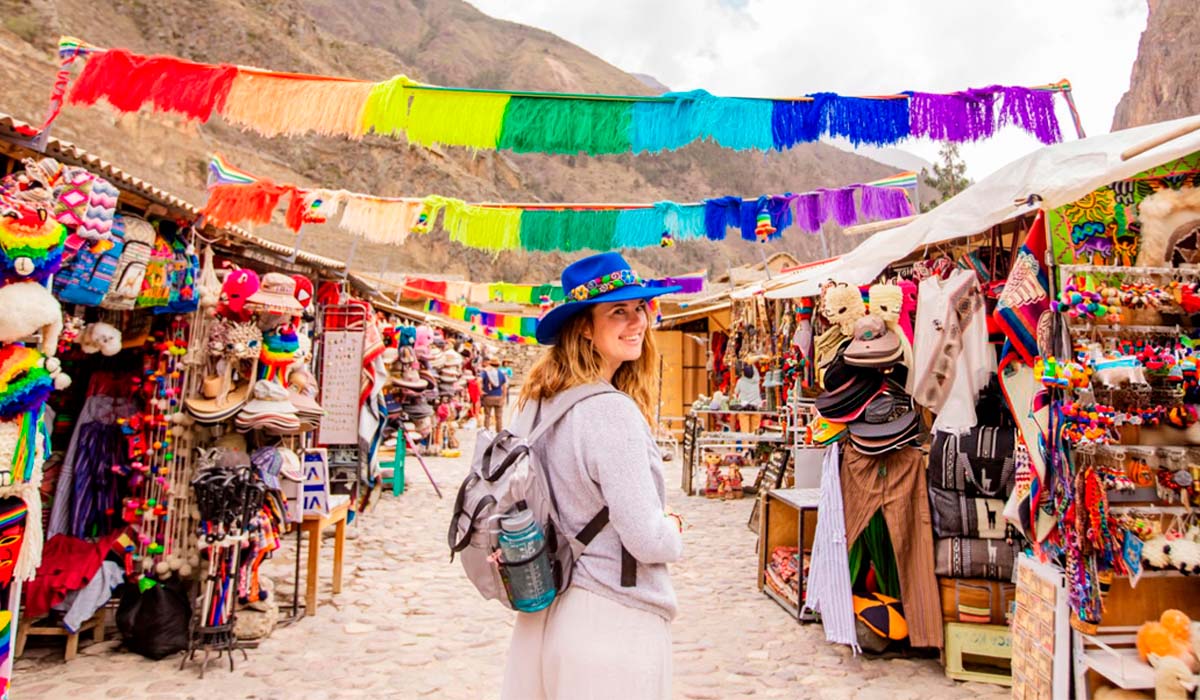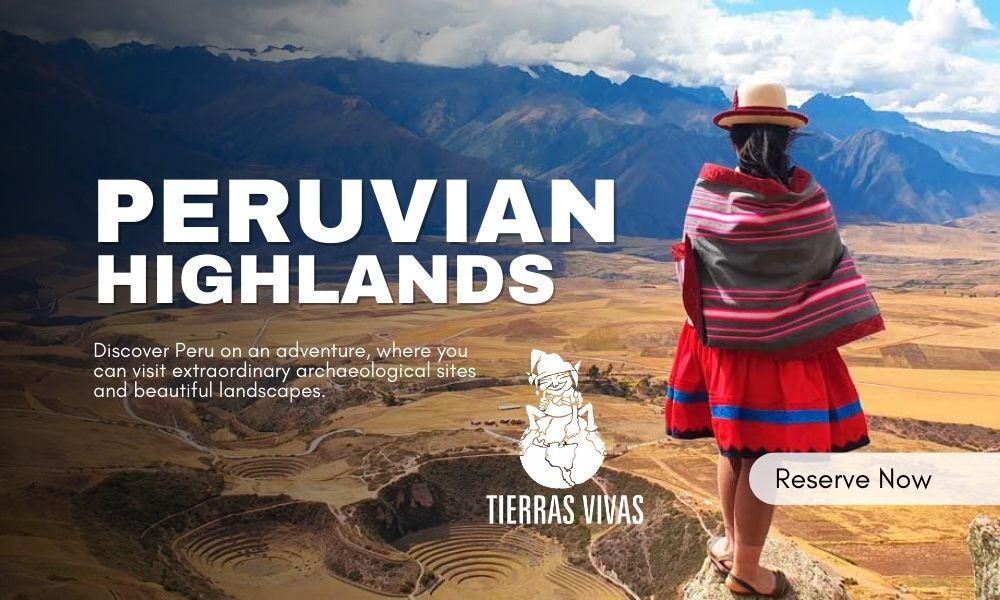The ruins of Ollantaytambo represent much more than a simple passing point; it is a place that you must visit during your stay in the Cusco region. You can explore this place on any tour to the Sacred Valley of Machu Picchu.
Why is this archaeological site important? This archaeological complex is not just a remnant of the past, but a testimony of indigenous resistance and the architectural perfection of the Inca Empire that continues to amaze the whole world. Also, you can walk through the town of Ollantaytambo, a lively place with old Inca buildings along its streets, which keep the original Inca layout. Moreover, its water channels continue to flow with the same engineering from centuries ago, which has earned it the title of "Living Inca City".
Whether you are preparing to board the train to the citadel or wish to explore its imposing temples, this place is one of the most important for getting to know the Sacred Valley of the Incas. So, if you decide to visit it, here we will tell you everything about this place, from its history to the activities you can do in Ollantaytambo.

History and Function of Ollantaytambo
What role did this place play in ancient Peru? In remote times, the town of Ollantaytambo functioned as a strategic military, agricultural, and religious center to manage and control the Sacred Valley of the Incas. After conquering these lands, Emperor Pachacutec ordered the construction of an impressive infrastructure that you can see today on any Sacred Valley tour.
The main sectors of this site are divided as follows:
- Center of Resistance: It functioned as the fortress where the leaders of the Inca resistance protected themselves during the Spanish invasion. It is one of the few places where the Incas won an important battle against the conquerors.
- Agricultural Complex: It is made up of hundreds of platforms (terraces) and channels that ensured food production for the nobility and the armies.
- Watchposts: On the tops of the hills you will see walls and strategic towers. These served to protect the valley from possible incursions by ethnic groups coming from the jungle.
How was Ollantaytambo built?
It is said that the Inca Pachacutec himself ordered the construction of the Ollantaytambo fortress with the goal of bringing the people of this area under his rule and conquering the lands. The town, crossed by water channels, keeps almost untouched the courtyards around which the original houses built of adobe and straw are placed. A detail that amazes people is that the ruins were built with megalithic stones transported from a quarry located at the other end of the Sacred Valley. This place is nine kilometers from the town and has three extraction groups:
- Molle Pucro: One of the supply sectors.
- Sirkusirkuyoc: The largest of the three, which shows evidence of being in full use when the Spaniards entered this area.
- Kantirayoq or Cacchicata: Where the extraction of minerals and precious stones was practiced.

Ollantaytambo Ruins: Architecture and Ceremonial Centers
What makes Ollantaytambo a jewel of architecture? This site stands out for its overlapping terraces and the use of colossal stone blocks, put together with such precision that they did not need mortar. Although many buildings suffered damage during the battles between rebel Incas and Spaniards in 1537, the place still keeps impressive stone structures.
The most important points you will find on your tour through the ruins of Ollantaytambo are:
- The Royal House of the Sun and its Terraces: It is made of 17 very wide terraces that face the main square. These terraces have steps built into their walls and are visible from a long distance, showing the agricultural and aesthetic mastery of the Incas.
- The Temple of the Sun: It is one of the most iconic sectors. It consists of an impressive monolith of six huge granite rocks joined with incredible precision on the western wall. Although it is partially destroyed, it offers a great view of the entire area.
- Water Worship and the Bath of the Ñusta: Ollantaytambo was a center for purification. The Bath of the Ñusta is a fountain with three sculpted water outlets, known as a liturgical fountain. Along with the Mañay Raqay Square (Square of Petitions), it shows hydraulic engineering similar to that of Tipón.
- The Monumental Portal and the Enclosure of the Ten Niches: Located at the end of the upper group of platforms, this structure stands out for its polished stone walls. It is one of the most popular and photographed points in Ollanta.
- Pinkuylluna and Choqana: On the hill in front of the fortress, you will see the colcas (grain storehouses) of Pinkuylluna, where you can also see a rock formation with the face of an Inca. 2 kilometers away is the Choqana fort, which served as an administrative and military control post.
About the town of Ollantaytambo
What makes this destination special is that it is the only Inca city that is still lived in by local families since the 13th century. It is known worldwide as the "Living Inca City" because its residents keep the uses and customs inherited directly from their ancestors.
When walking through its streets, you will notice the following highlights:
- Original Urban Design: The layout of the fifteen blocks that make up the historic center remains the same as in the time of the Tahuantinsuyo. You can see narrow stone streets and water channels that flow next to the houses, which still work with the original engineering.
- Cultural Connection and Traditions: From this point, it is possible to visit nearby communities like Willoc, where the inhabitants keep Quechua as their native language. Their red and black clothing is very characteristic, as it represents the huayruro seed, used as a charm.
- Link to History: In the times of the Incas, a bridge was built to connect the town with the Inca Trail. This established Ollantaytambo as the main link and strategic control point on the route to the citadel of Machu Picchu.

Things to do in Ollantaytambo
This town is one of the few places in Peru where people still live in buildings dating back to the time of the Incas. Its cobblestone streets, active water channels, and mountain views make it a key point within the Sacred Valley of the Incas. If you plan to visit, here we recommend the 5 things you can do in Ollantaytambo:
1. Explore the Ollantaytambo Fortress: It is the main attraction of the town. Prepare to climb its impressive terraces until you reach the Temple of the Sun.
- Do not miss: The "Ñusta's Bath", a ceremonial fountain with perfect stonework that shows Inca hydraulic mastery.
- Important fact: To enter, it is mandatory to show the Cusco Tourist Ticket.
2. Go up to Pinkuylluna (The Inca Granaries): If you are looking for a panoramic view of the town without paying for an entry ticket, this is the ideal option. They are old food warehouses (colcas) located on the slope in front of the fortress.
- Difficulty: Moderate, because it is a steep climb of about 20 to 30 minutes.
- Cost: Access is free.
3. Walk toward Inti Punku (The Sun Gate): For hiking lovers, this one-day route takes you to an Inca structure that perfectly frames the snowy Veronica mountain. It is a demanding hike, but it offers some of the best views in the entire Sacred Valley.
4. Visit the ALQA Museum: Located inside the town, this museum of Andean expressions is a hidden gem. It displays contemporary and traditional art from local communities, which will help you better understand the current worldview of the area.
5. Gastronomic and Experiential Tour
- Pachamanca Experience: You can participate in the preparation of this ancient banquet cooked underground with hot stones in various local hotels and restaurants.
- Sacred Valley Brewery: Located very close by, in the Pachar area, it is the ideal place to try award-winning craft beers made with local ingredients.
When is the best season to visit Ollantaytambo?
The best season is during the dry season, which covers the months April to the end of September. In October the rains begin and you can find Machu Picchu covered by clouds. If you travel in June, we recommend you to book the Inti Raymi 2026 Tour that takes place in June 24th, and also hike the Palcoyo Mountain Tour, which is an incredible Rainbow Mountain located in the Andes.
Hiking tours to Machu Picchu
Many are the routes that take you to Machu Picchu, but none is like the Inca Trail Tours, the most famous pedestrian path in the Americas. After flying from the capital of Perú, Lima, you will arrive in Cusco to walk for four days along a path through forests and dense fog, millenary stone steps and discovering the ruins of ancient fortifications and Inca cities, and all the time enjoying majestic views.
- Salkantay Trek to Machu Picchu 5 days
- Hiking the Inca Trail to Machu Picchu 5 days
- Inca Quarry Trail 4 Days
- 2 Day Inca Trail Tour
- 2 Day Inca Trail with Camping
- 3 Day Inca Trail
- Vilcabamba Hike to Machu Picchu 6 days
- Choquequirao trek to Machu Picchu 9 days
- Ausangate trek 7 days
If you want to visit Machu Picchu, we recommend you to book your Machu Picchu Ticket in advance, so you will enjoy your Vacation in Machu Picchu without any problem.







